You might think that anyone who served as a combat sniper in Iraq and Afghanistan before becoming a cop in the second-most populated city in the United States might be a grizzled old man with a chip on his shoulder. With a father who earned three purple hearts in Vietnam prior to entering policework on the infamously tough streets of Gary, Indiana, it might be in Victor Lopez’s DNA to serve others and stay humble doing it. “He’d tell me, ‘Treat everyone with respect regardless of what status you think they have,’” Lopez says. That same focus on patiently solving problems hasn’t only helped Vic earn respect in his careers, but also motivated him to teach others to avoid getting bogged down by ego and pride. Instead, he reminds students to keep their sights set on elevating their knowledge.
As the owner of Sierra Element, Vic has taken it upon himself to create a curriculum that can only come from hard-earned experience in some of the worst conditions imaginable. As crime continues to rise amidst an atmosphere of anti-police rhetoric, both average civilians and officers are understandably seeking ways to up their performance behind the trigger to stay safe. Vic has lived his lyrics and is a hidden gem of tactical training that RECOIL OFFGRID felt needed to be brought to light. We spoke to him to see how he’s combining military and law enforcement work into practical skills available to anyone.
Photos by Patrick McCarthy and John Schwartze
Our Interview with Victor Lopez of Sierra Element Training
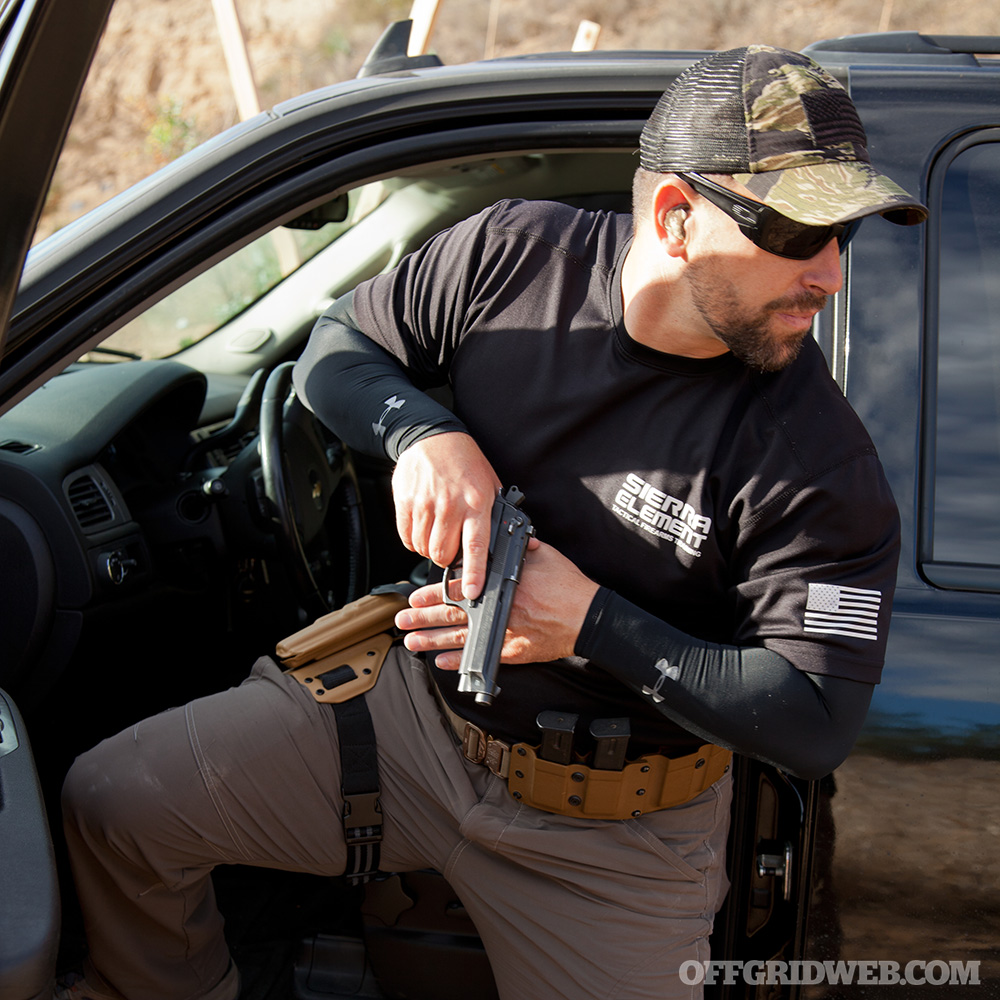
RECOIL OFFGRID: Where did you grow up?
Victor Lopez: I grew up in Gary and Merrillville, Indiana. Joining the Marine Corps in 1994 brought me out to California.
What made you want to join?
VL: My dad was a Marine in Vietnam and then became a police officer in Gary, Indiana.
Did you go into the Marines wanting to become a sniper? What was sniper qualification like?
VL: That kind of just happened. I just wanted to be a rifleman initially, but I liked the craft of being stealthy and the long-range precision aspect of it as well. When I tried out for the platoon in 1998, they called it the sniper indoctrination. It was heavy on physical fitness, a lot of observations, and KIMS games — KIMS stands for “keep in memory sniper.” Those are basic memorization drills. There were a lot of ruck marches with a 40-pound pack, some sleep deprivation that lasted a few days, and then I was eventually able to go to sniper school, which is 10-and-a-half weeks.
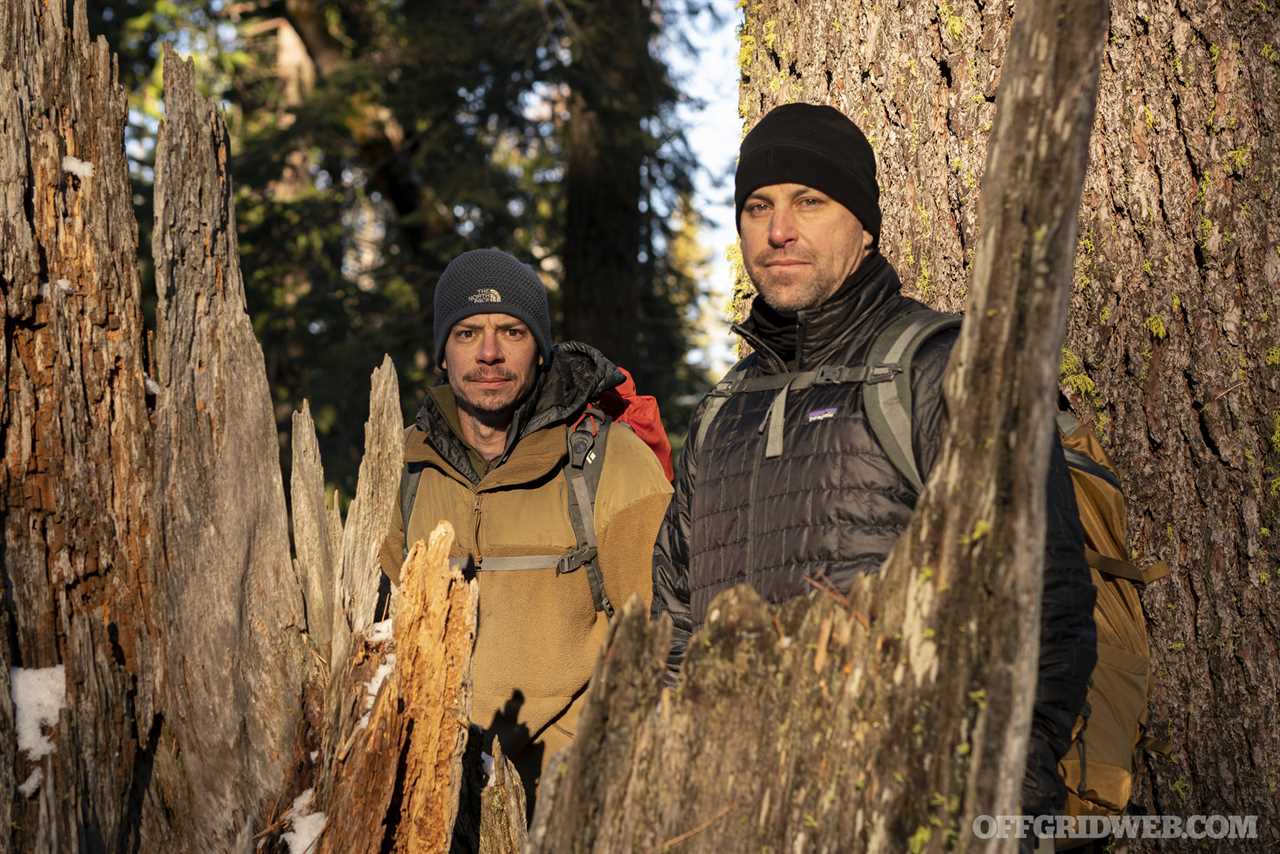
Above: Vic and Corvus Survival’s Jerry Saunders, who we interviewed in RECOIL OFFGRID Issue 47.
What are the core skills that any sniper must master?
VL: Marksmanship is number one overall. Physical fitness as well as communication skills, in either electronic or verbal articulation, because we have to explain the mission in detail to a commanding officer. If you’re not articulating it well enough, you’re not going on that mission. Definitely teamwork and good social skills, because you’re working with other individuals in confined spaces for up to a week, so you need to be able to get along and communicate well.
What deployments and missions do you feel were the most challenging?
VL: Initially was with 1st Battalion, 1st Marines. Then, after I got out of active duty I went into 2nd Battalion, 23rd Marines where I was able to go to Iraq twice and then Southeast Asia. When I went to Afghanistan, I was with 2nd Marine Expeditionary Force. I was in Iraq in 2003 as a sniper operator, and in 2009 as well. It was challenging during my time as a precision marksman advisor to the Afghan National Army. There were language and cultural barriers. They lacked a lot of the basic skills a regular soldier would have, so it’d take longer to correct issues.
This might sound strange, but externally the easiest portion was dealing with war and dealing with other services. It’s hard to convey a sniper’s mission to someone who has never been a sniper. That’s the most challenging part — to have others understand what it takes as far as selection of personnel, equipment you need to be successful, and the continuous education you need to stay proficient and advance.
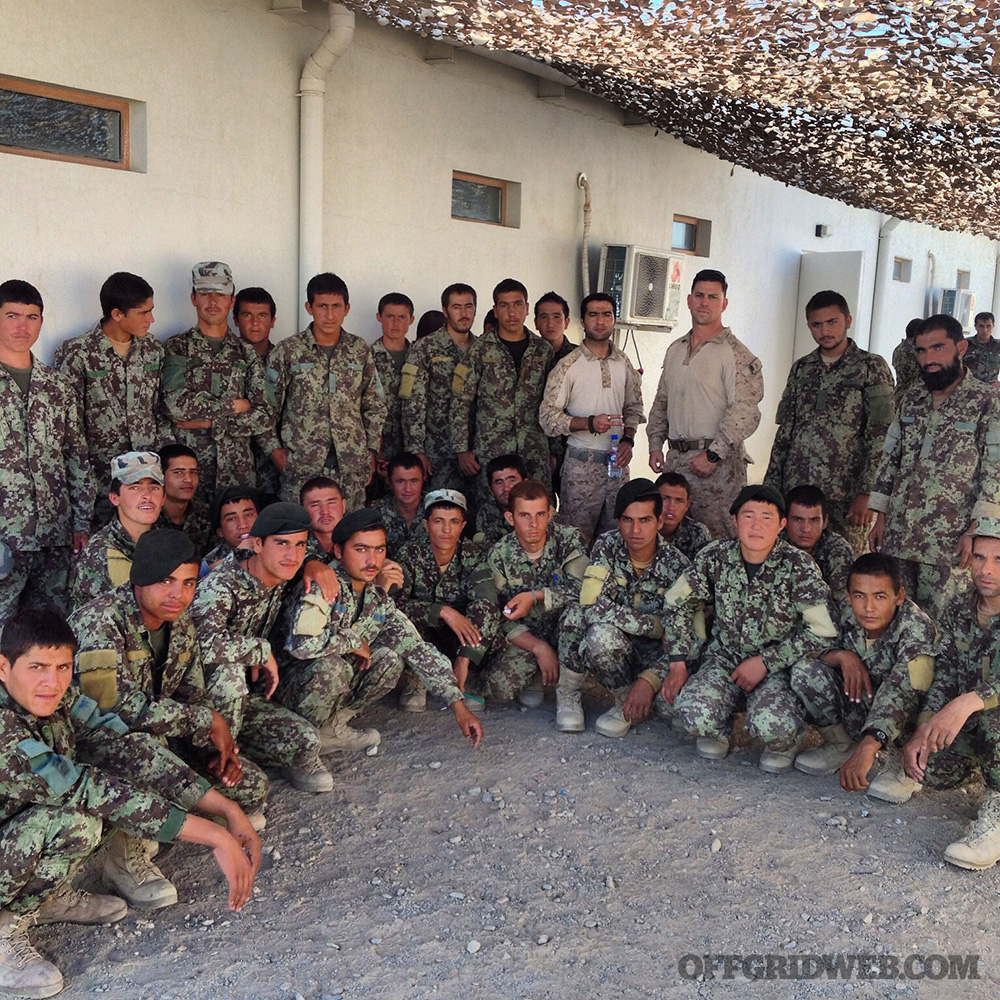
Above: Serving in the Middle East while in the Marines.
I enjoyed training the Southeast Asian snipers in Thailand, Indonesia, and South Korea, and learning the jungle environment. A lot of their weaponry wasn’t as good as ours, but they still had some of the basic skills, which made it a lot easier for us to build on those.
What do you think we got wrong as far as U.S. involvement in Afghanistan?
VL: I think we gave them a little too much, in my opinion. We didn’t allow them to think for themselves as much as we pushed our ideals on them. Instead of allowing them to try and build their nation on their own, we gave them a little too much information and equipment. We were trying to train them, but they were training to kill us. You teach them the skills you use and then they’d turn the gun on you. Advisors all over the country were getting killed. They didn’t want to be told what to do, but they certainly wanted the free money and gear.
How long were in you in the military?
VL: Twenty years.
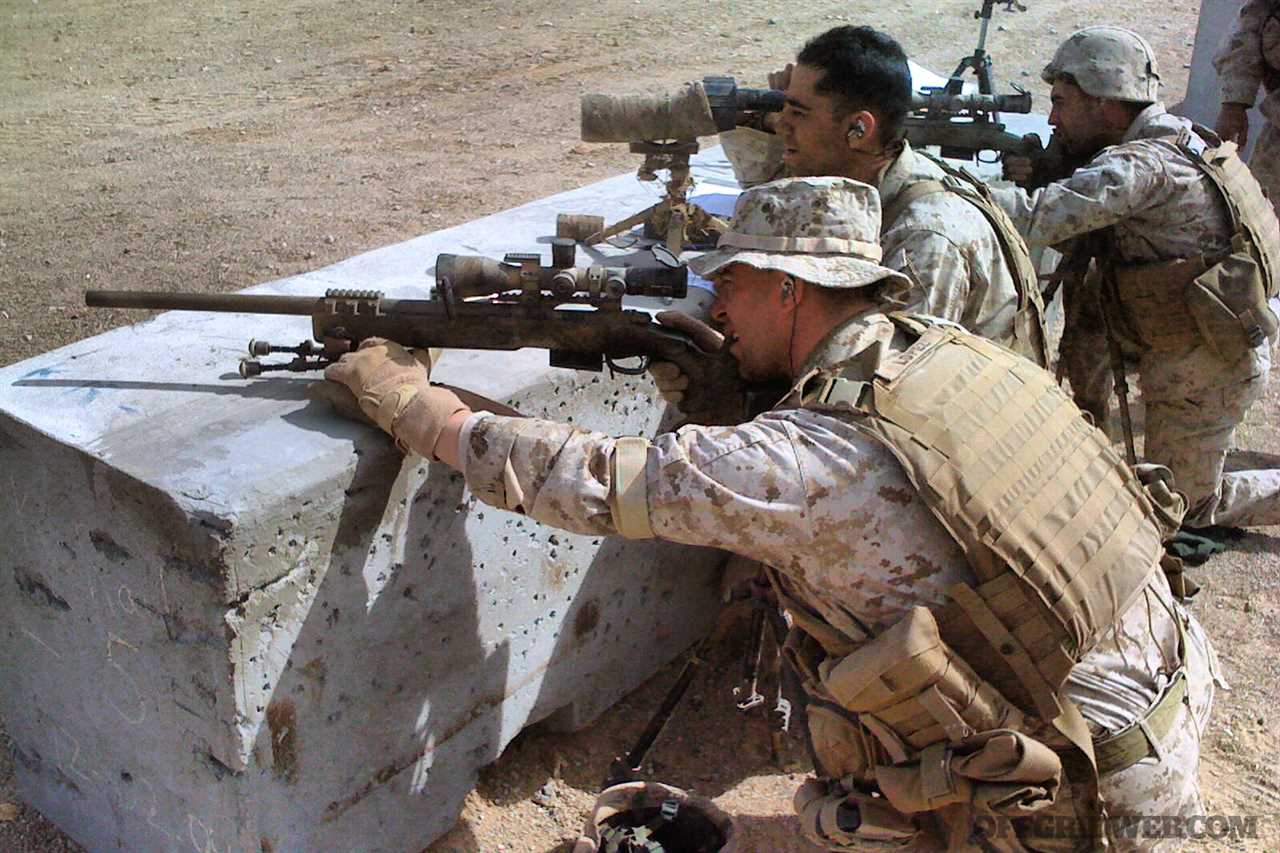
Did you then go directly into policing?
VL: Approximately six months after I finished my active service, I got into a police department. That’s something I wanted to do since childhood. I really enjoyed my dad’s stories of pursuits and helping people — stories of being able to arrest someone that hurt or shot someone else. Also helping retrieve property for someone who’d been burglarized. I really enjoyed those stories he told me growing up.
What divisions have you worked in?
VL: Patrol, gang enforcement, and patrol as a field training officer, and then I worked counter-terrorism bureau. Now, I’m currently assigned to training division where I work patrol rifle and tactical shotgun unit.
How do you think being a sniper better prepared you for law enforcement?
VL: As far as counterterrorism, as a surveillance officer, while working as a sniper you have to do a lot of observation and study body language. Studying behavior helped me become a better surveillance officer because I can infer how someone’s talking to and interacting with someone else based on their body language and gestures.
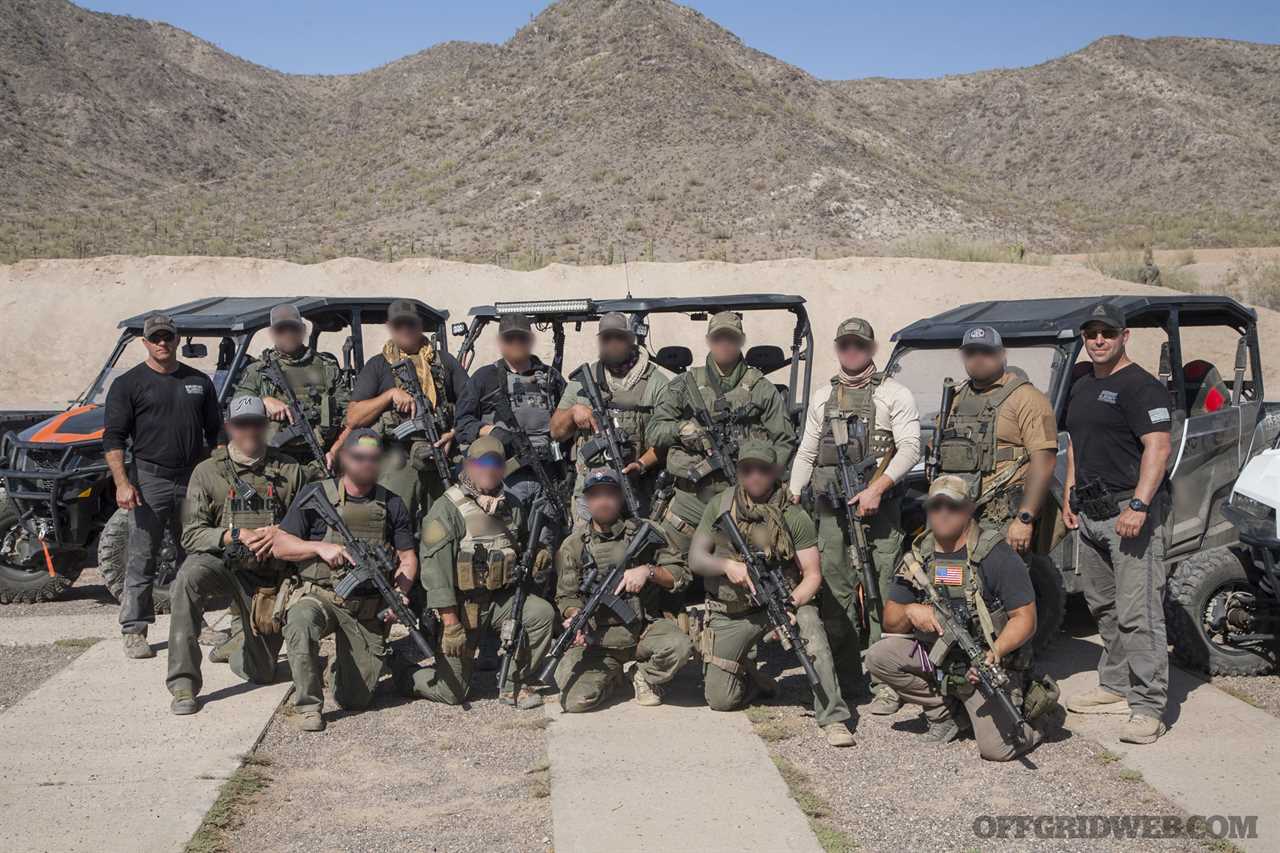
Above: Training Pinal County Sheriff’s Office deputies in Arizona.
What have been your toughest experiences in law enforcement?
VL: The most difficult thing in recent years is the wave of defund-the-police efforts and reduced sentences for violent offenders.
What do gangs’ efforts tend to be focused on and how sophisticated are they?
VL: Primarily drugs as well as basic violence and intimidation. A lot of extortion with local businesses, too. They have people working at all different levels. There are people who commit crime, people who help facilitate it, businesses that are involved because they’ll benefit from it, and associates who want to be a part of something. It’s not just this image some people have of a few guys hanging out on a street corner.
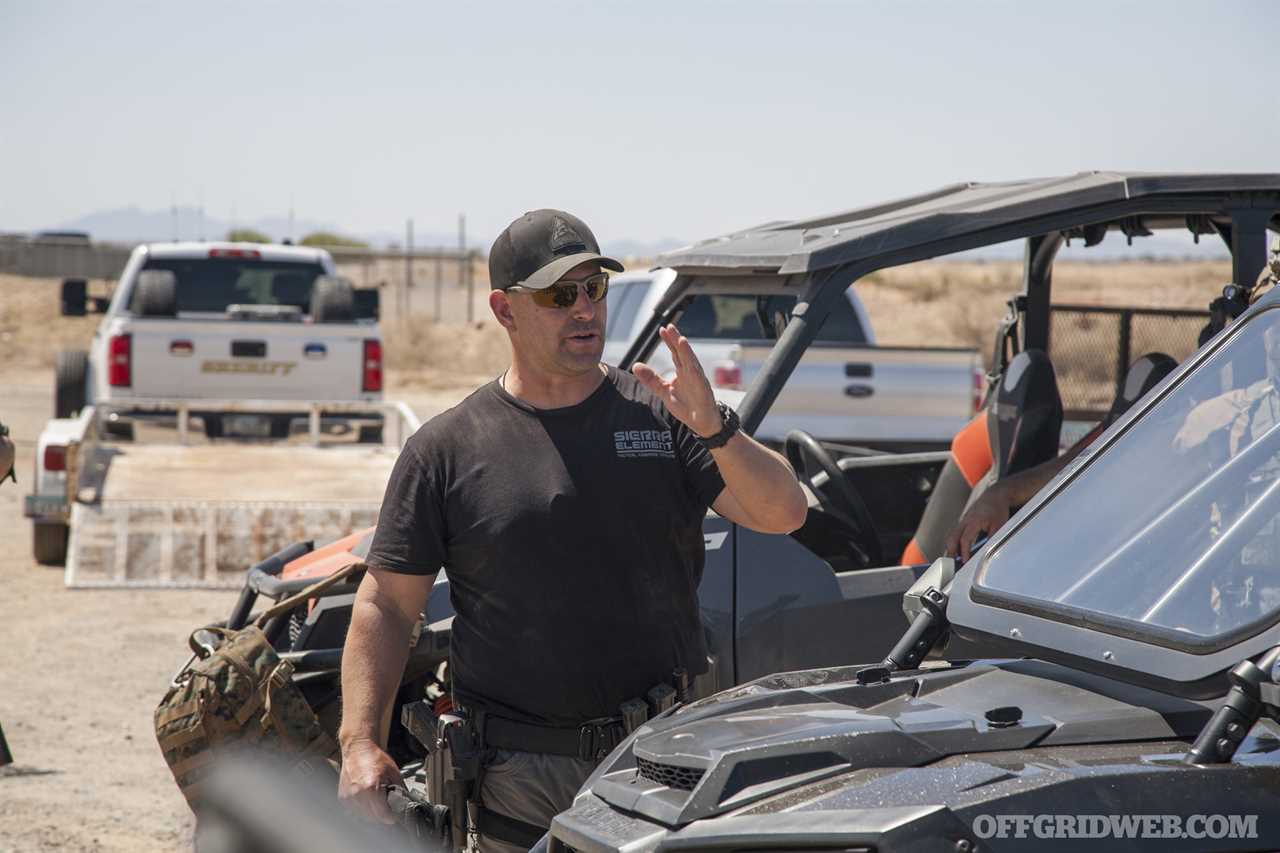
How has policing changed since you first started?
VL: A lot of the paperwork and computer systems have changed quite a bit. Technology has changed with GPS in the vehicles, and body cam and dash cam recording. Some of it was handwritten before. Some of the less-lethal tools — we didn’t have the 40mm before, we only had beanbag shotguns. Initially, not everyone had a taser either. Learning different tools, techniques, and procedures of how to take someone into custody, whether it’s the way we talk to them, how we approach, or the number of officers there to assist. While changing certain aspects of policing, they haven’t put any officers’ lives in danger.
Over the last few years, has there been a lot of attrition in your department?
VL: There has, but there’s always been. I haven’t seen a mass exodus, but it’s a little more than what I’ve seen in the past. People are realizing they can have a comfortable life in another state. A lot of people traveled outside of California during COVID so they could get some freedom, see other states, and consider what they had to offer.
What training would you recommend the public pursue to better protect themselves, besides getting their concealed carry if possible?
VL: Take some type of martial arts training so you have a better awareness of your capabilities. If your local department has a civilian police academy, attend that so you can see the things that officers are going to be confronted with. Group tours and ride-alongs will give people a chance to see for themselves how officers interact with people and how criminals interact with officers. Don’t just believe what you see on TV. People should avoid areas they think will be dangerous. You can do a Google search of crimes in the area you plan to visit. Apps such as Crimewatch are also good resources to be informed about localized crime.
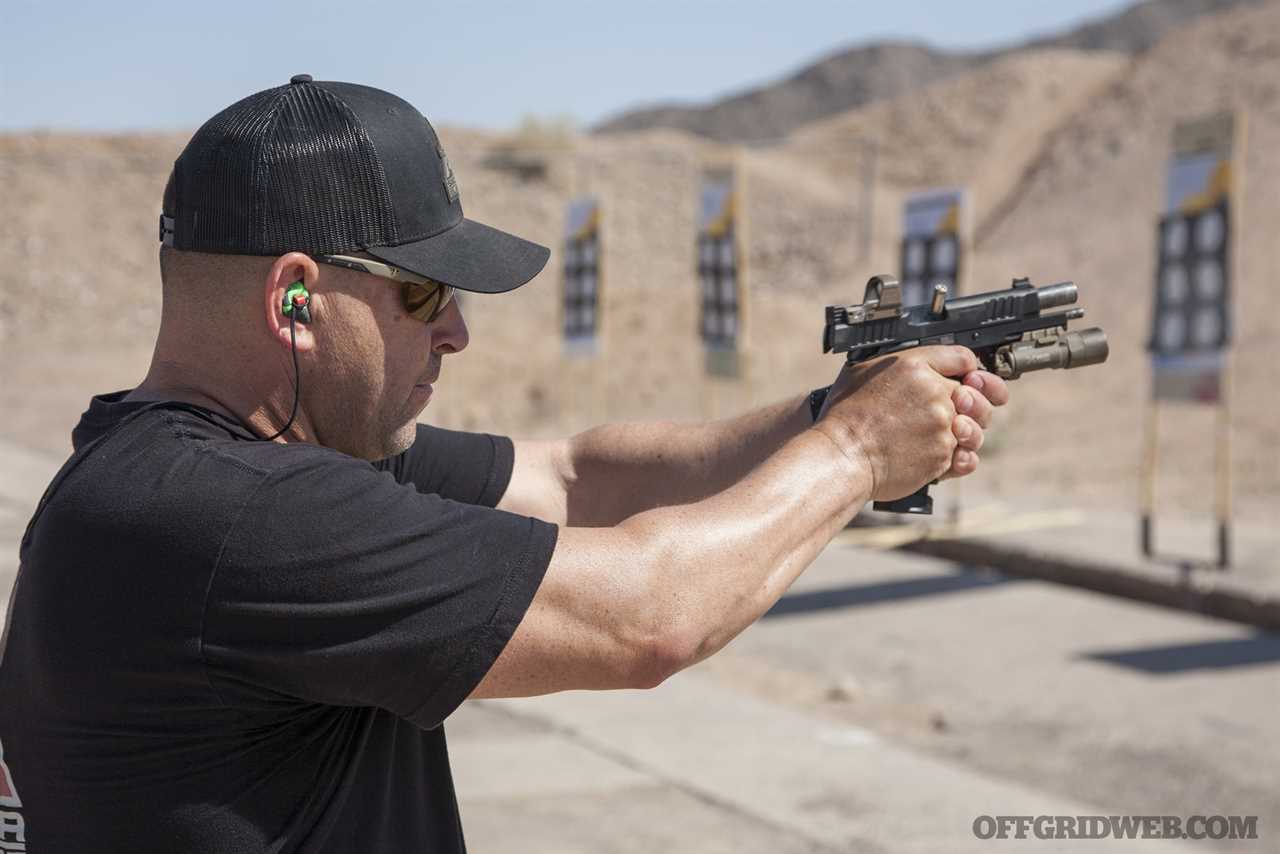
What sort of training do you recommend police get to supplement the normal training they get?
VL: Any marksmanship training from a reputable source outside your department will help. It’s good to go out and see what the training world has to offer. A lot of officers just learn what they learn from their department — you’re not going to actually grow from that. Don’t just rely on the training you receive in the academy. In my opinion, jiujitsu and Muay Thai are some of the better martial arts. Granted, I’ve taken them for quite some time, but I think they give you a balance of the stand up and controlling of a suspect to take them into custody and prevent their escape. I’ve practiced Brazilian jiujitsu for seven years and have done Muay Thai for 17 years. I’m a blue belt in BJJ and I’m an instructor in Muay Thai.
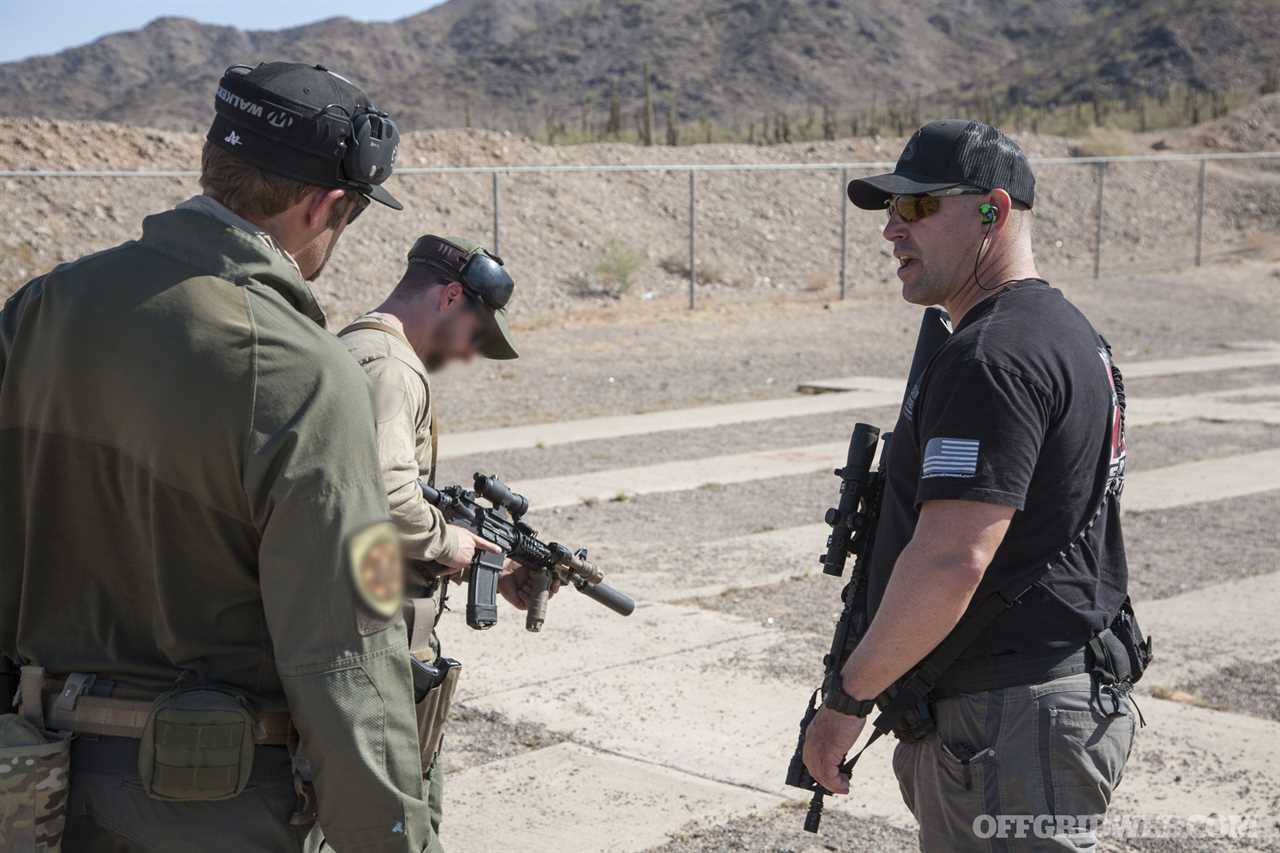
Tell us about what motivated you to start your company, Sierra Element?
VL: During my time in the Marine Corps, I was part of a competition the Corps has every year called Super Squad. It’s comprised of Marine infantry, and you have a series of events: machine gun shoots, hiking, military operations in urban terrain, land navigation, defensive perimeter work, and some marksmanship events. We got a lot of training just for the 13 guys we had. In the three weeks we trained, I received the most one-on-one training I’d ever had. A warrant officer asked me while we were training to design a pistol course with movement and everything. I did it and really enjoyed the freedom to design things and help people evolve and learn new skills.
That’s why I created Sierra Element in 2012. It’s something I’d been wanting to do forever. I just didn’t have the opportunity before and, at that time, I felt I didn’t have the skills that were necessary to be an instructor like the kind of instructors I looked up to. I didn’t think I had enough skill, so I kind of just worked at it and went to several instructor schools and built up my résumé with training.
Where did the name come from?
VL: Sierra is the S in the phonetic alphabet in the military. S is for sniper. Element is team, so Sierra Element essentially means sniper team.
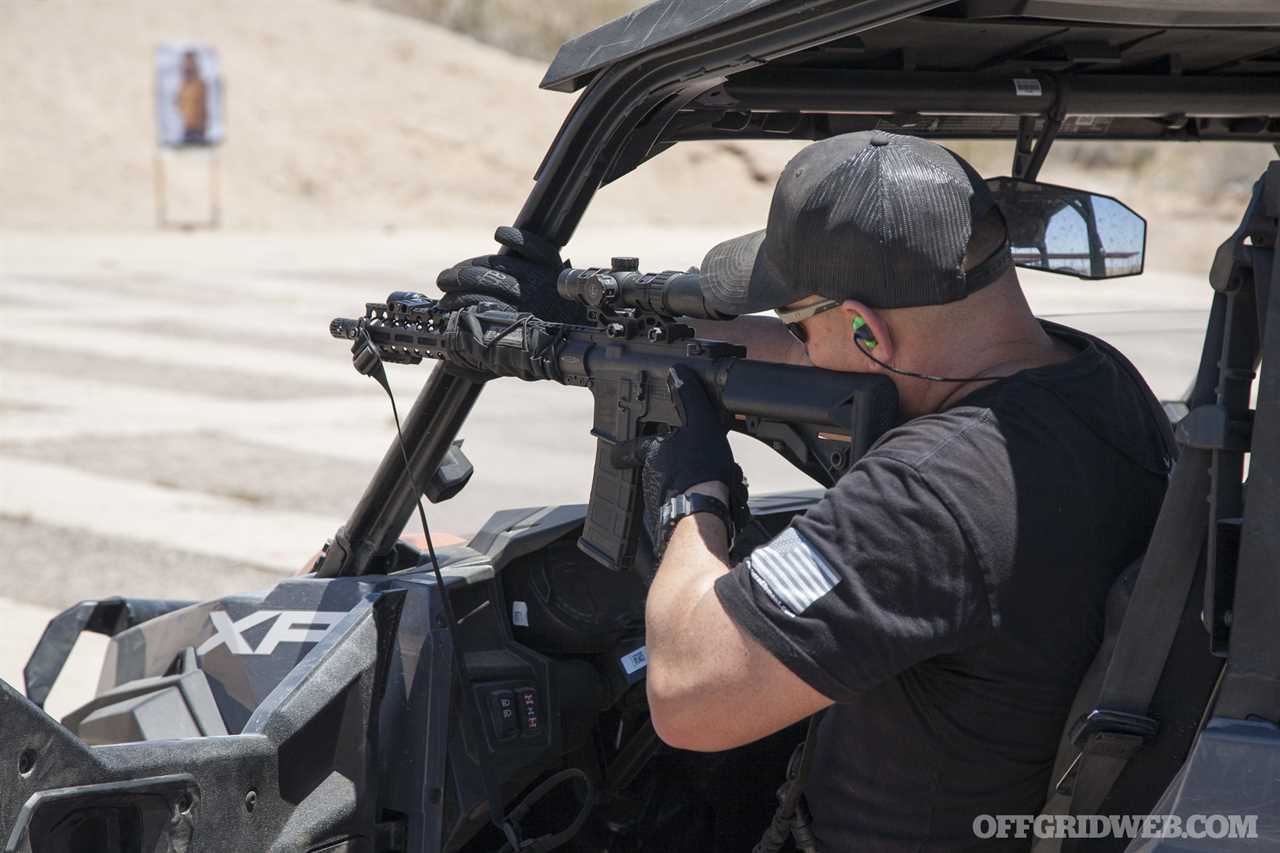
What is your focus and what do you bring to the table that other training companies don’t?
VL: We definitely have the pedigree, background, and experience from my being a police officer and a sniper who actually deployed, saw the world, and learned how other countries train. I merged a lot of components from sniping and brought it into carbine and regular rifle work. When I created the rough-terrain carbine stuff, I took elements from Marine Corps mountain sniper courses and merged it with patrol designated marksman curriculum and made it a little different. All our instructors have 20-plus years of experience as a police officer as well as some background in the military or working special assignments as a police officer. With a lot of companies out there, it’s just the one guy that you’re getting. My company isn’t just about one individual and their experience. It’s a team effort on every course, and we teach with input from all different parts of law enforcement and military.
I’ve been heavily involved since 2017, either training law enforcement in the patrol designated marksman program or training myself to gather more info. I wrote a book on the patrol designated marksman concept. It should be out shortly. I helped create Palm Springs PD’s designated marksman program. The program is intended for law enforcement officers who have the knowledge of an AR-15 equipped with a variable powered optic to bridge the gap between the patrol rifle and the SWAT sniper.
We’re also doing UTV operations for law enforcement. We teach how to patrol a crowd with your vehicle, how to respond, how to set up your equipment inside a vehicle, how to exit the vehicle and employ it, how to use it for cover, and how to use it as a shooting platform. We offer both courses to the public as well, but under a different name for the civilian version of the designated marksman course.
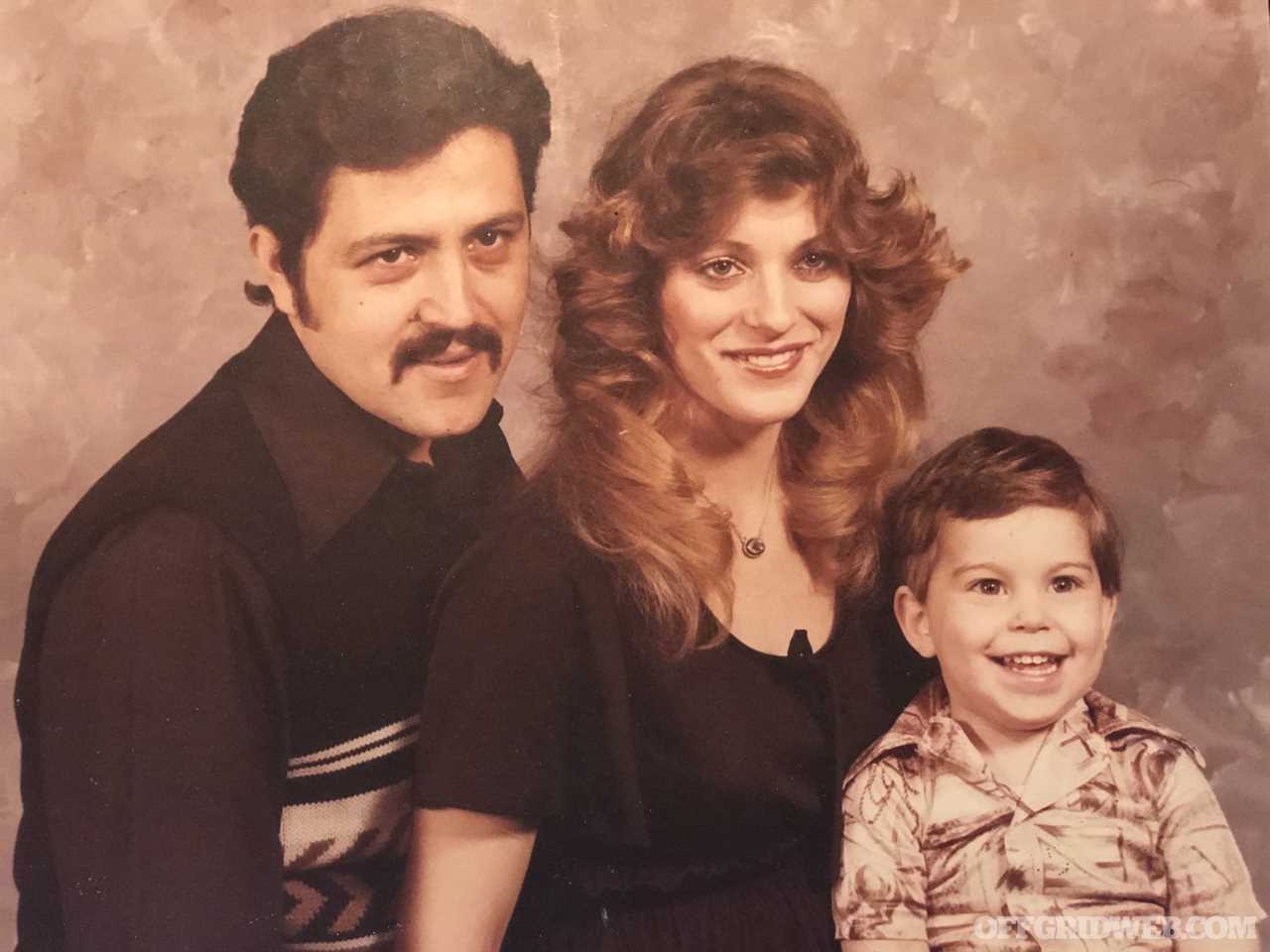
Above: Vic and his parents, circa late ’70s.
What are the biggest misconceptions you see most students entering your courses with that you have to help them purge?
VL: We get people who are convinced that, if they purchase an expensive gun, it will make them an amazing shooter and they’ll never miss. I have to break it down to them that we’re all going to miss, no matter how good of a shooter you are. When missing occurs, the goal is to recognize what you’re doing wrong and how you can fix it quickly, so you can get back on target faster. Sometimes we’ll get guys who miss, and they start shouting, lose their bearings, and the issues just multiply. Then, they miss again and start shooting faster. In every class I remind the students to keep their composure when they miss a target and to not hesitate to ask for additional assistance.
What types of training do you offer?
VL: All the standard rifle, pistol, and shotgun courses. Our biggest courses that do the best are our rough terrain series — rough terrain scoped carbine, urban scoped carbine, rough terrain pistol, and urban close precision engagement, tactical tracking and patrol designated marksman course, sniper operator, CQB, and competition pistol courses.
Do you offer sniper training?
VL: We do. We have several sniper operator courses, meaning you must already be a school-trained sniper. We have urban sniper, rough terrain sniper, and a target acquisition course where we focus on techniques of camouflage and sniper movement.
If you could take a magic wand and change police training, what would you do?
VL: I would allow officers to attend outside training a lot more and have certain funds every year for them to train at outside locations.
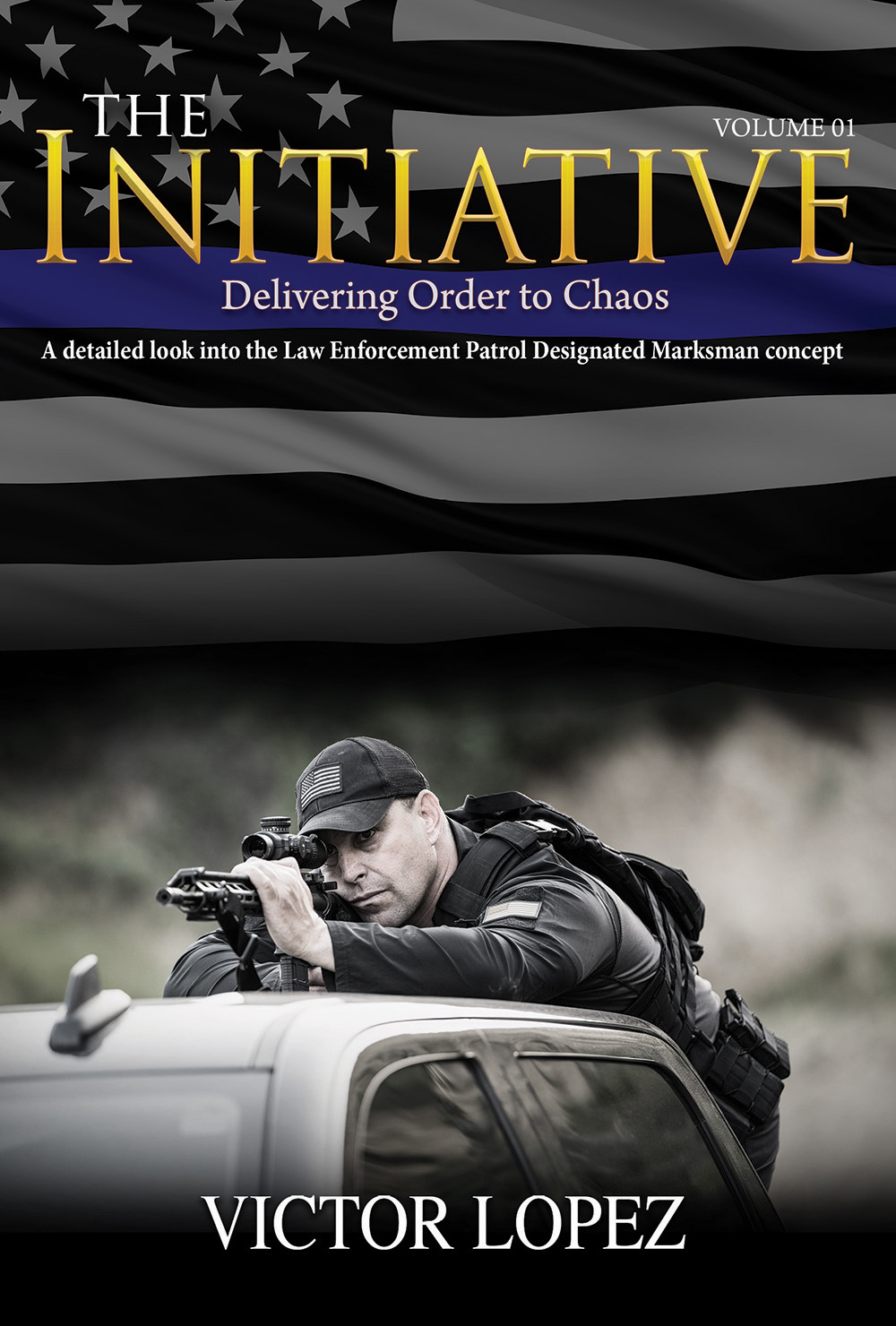
Above: Vic’s book, “The Initiative: Delivering Order to Chaos” will be available soon on Amazon.
Are they not allowed to attend outside training?
VL: They are, but the compensation isn’t there. They have to pay for it out of their own pockets. Some officers have families and don’t have extra money so I can understand.
What would you recommend to those looking to enter policework as a career?
VL: I’d do several ride-alongs so you can see how the world is outside your normal activities and neighborhood, and how officers deal with criminal activity.
What do you think people tend to misunderstand the most about criminality?
VL: Criminal activity is everywhere, regardless of the neighborhood you live in. Crime is more prevalent than you would think.
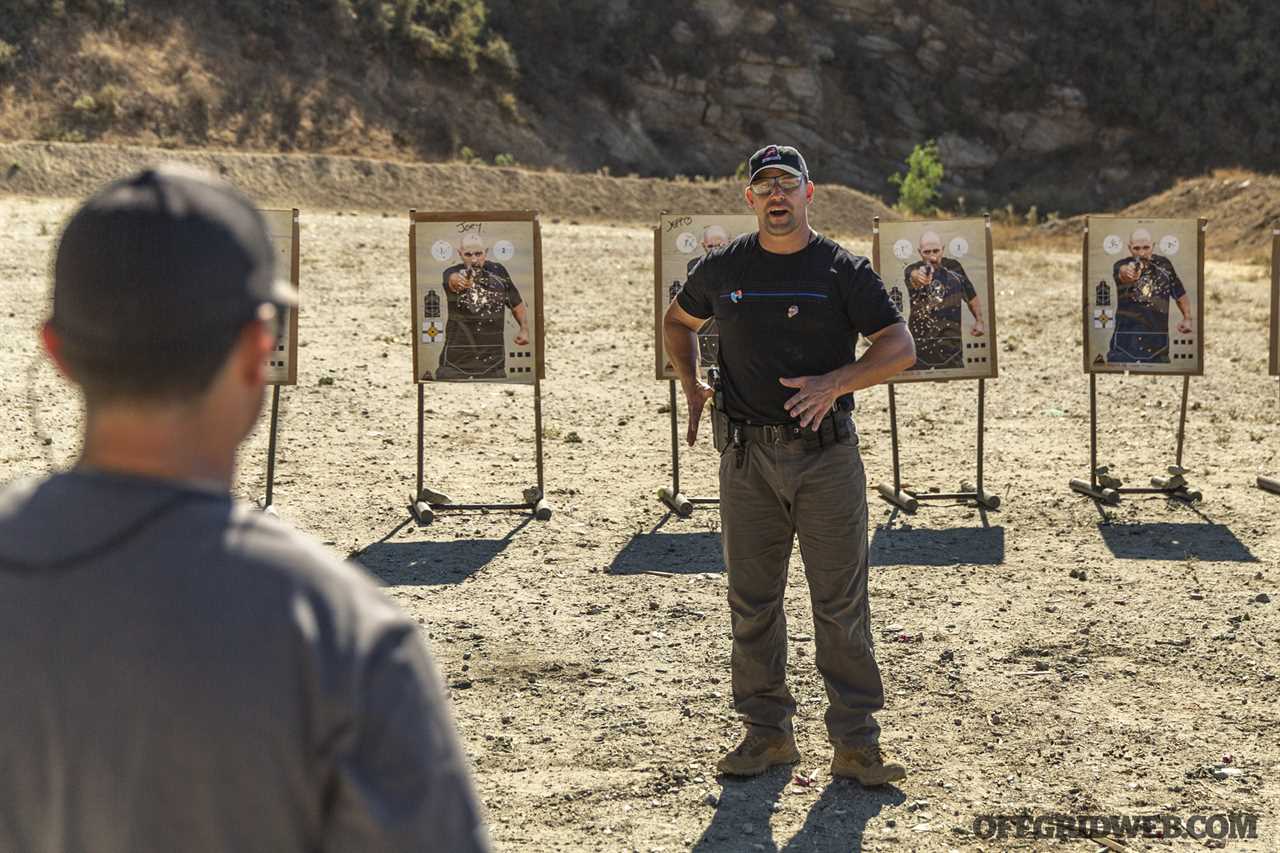
Above: Sierra Element pistol class at Burro Canyon Shooting Park in California.
What types of crime have you seen rise the most over the last few years?
VL: I’ve seen a rise over the last few years in drug activity, retail thefts, assaults on police officers, and assaults with a deadly weapon.
Have you felt a tangible decline in public support for police?
VL: Not personally. People continue to come up to me in public and thank me for my service and express how they appreciate law enforcement.
What do you think is driving many media outlets’ narrative that the police aren’t being supported by the public and should be defunded?
VL: Things are driven off emotions and with emotions come ratings. With ratings come advertising and with advertising comes money. When they focus on the few negative things they hear about police officers, they don’t see how officers across the country go above and beyond to assist people they’ve never even met. The first time they’re meeting someone might be the time when they stepped into the line of fire to protect them.
About Victor Lopez
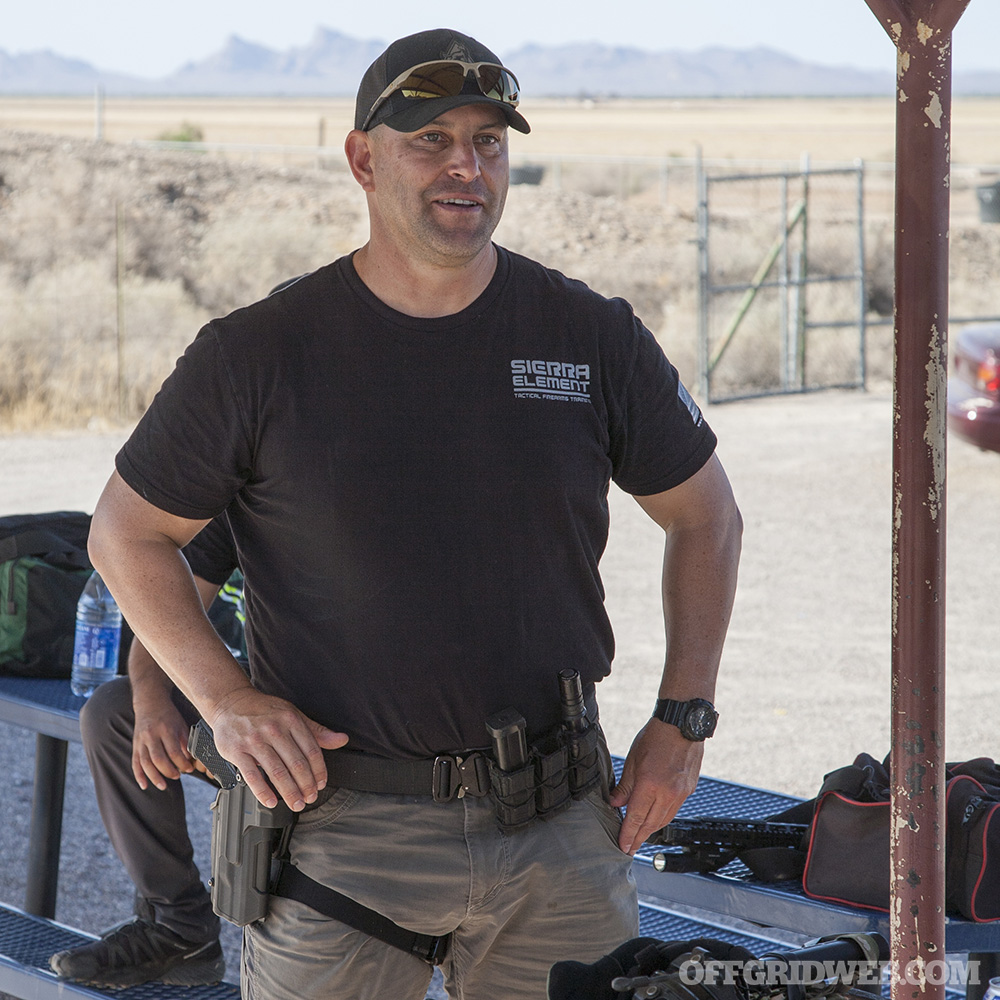
Age: 47
Childhood idol: Dad
Favorite gun: Staccato P Duo
Most realistic police movie: Colors
Least realistic police movie: End of Watch or any of the Lethal Weapon movies
Crown Vic or Dodge Charger? Crown Vic — much more room!
Recommended reading list:
- How to Win Friends and Influence People by Dale Carnegie
- The 4-Hour Workweek by Timothy Ferriss
- With Winning in Mind by Lanny Bassham
What do you want on your tombstone? Relentless Savage
URL: sierraelement.com
Vic's EDC Gear
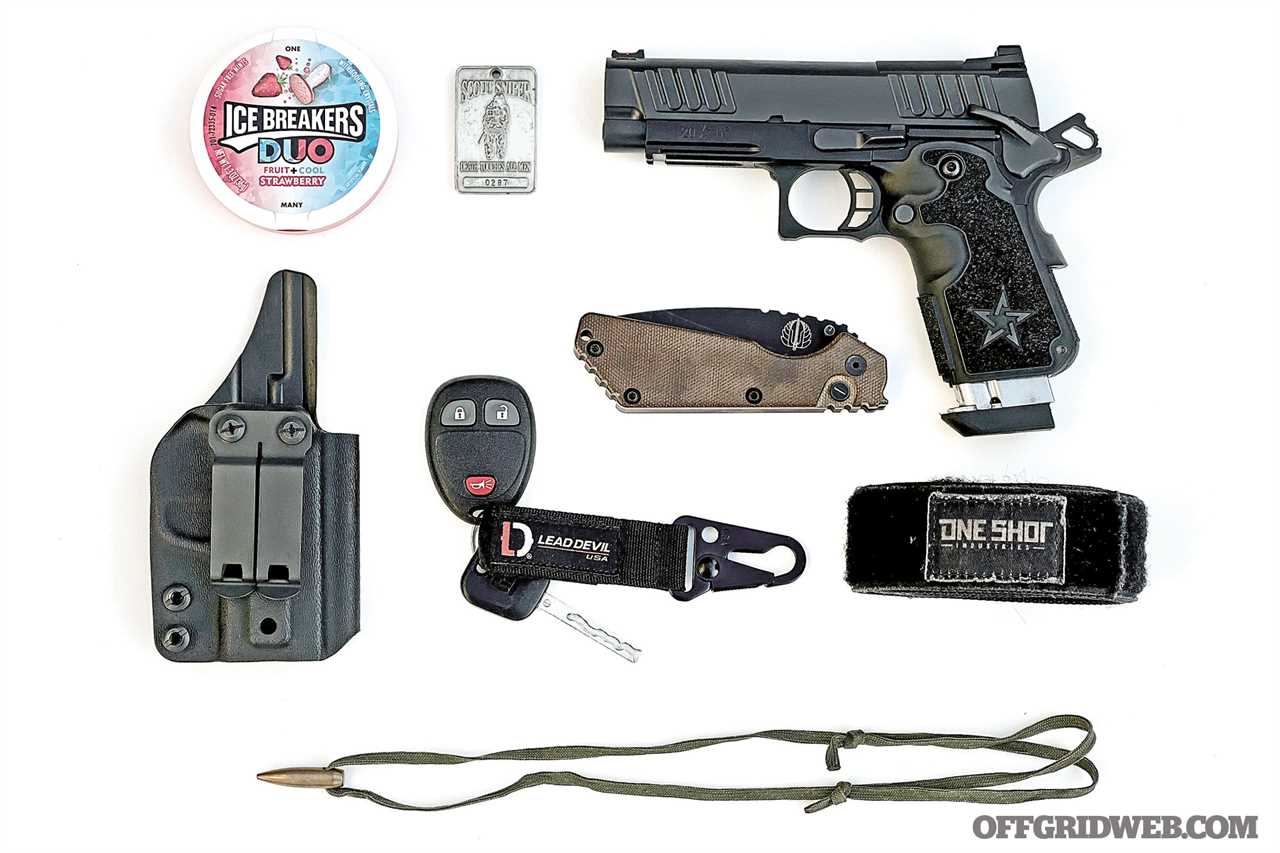
- Staccato C pistol
- Marine Scout Sniper Challenge Coin
- Ice Breakers Duo
- Centurion holster (custom)
- One Shot Industries inner belt
- Hog’s tooth
- Keys with Lead Devil keychain
- Pro-Tech Strider knife
Related Posts
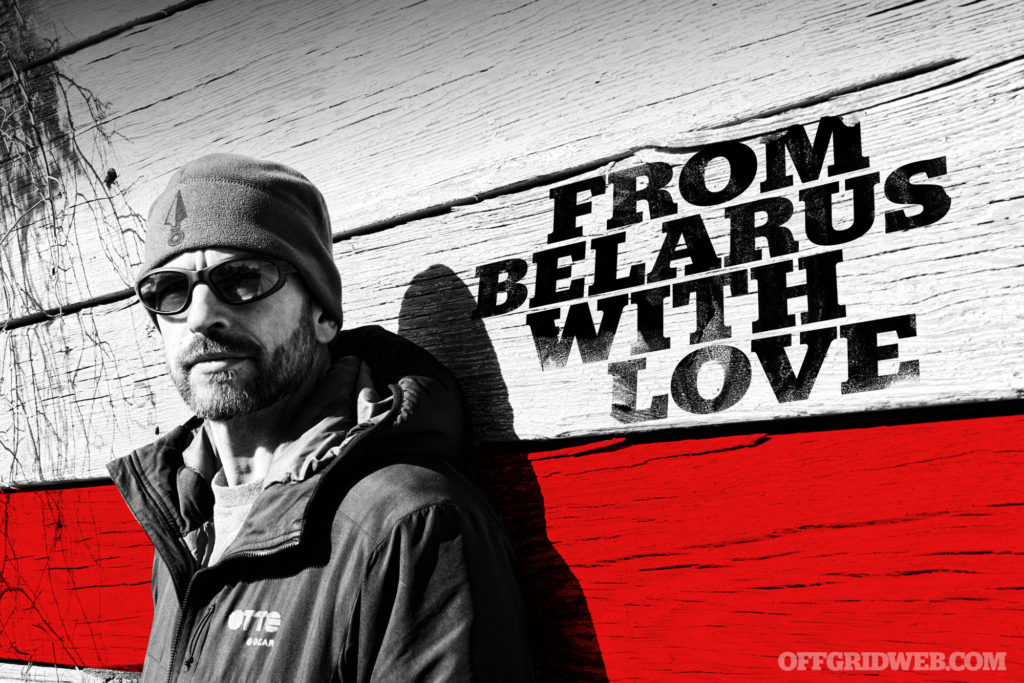
Lessons from a Soviet Union Collapse & Chernobyl SurvivorAfter living through the collapse of the Soviet Union and the fallout of Chernobyl, Greg Mihovich understands the value of preparedness.
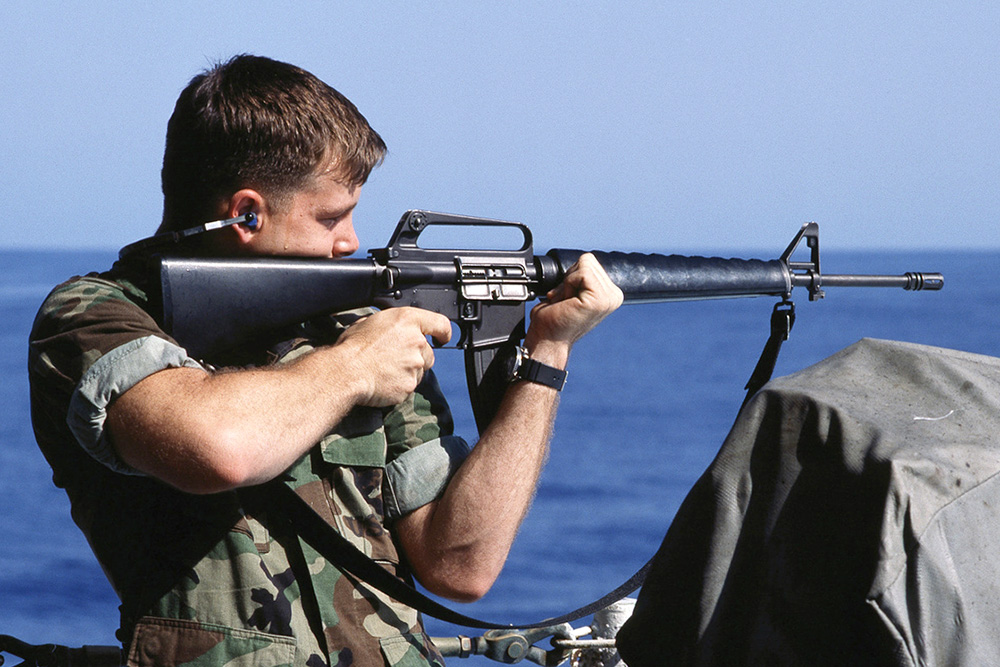
Book Review: “The Book of Two Guns” by Tiger McKeeThe Book of Two Guns is a journal written in the early 2000s that documented lessons learned while training with a 1911 pistol and AR-15.
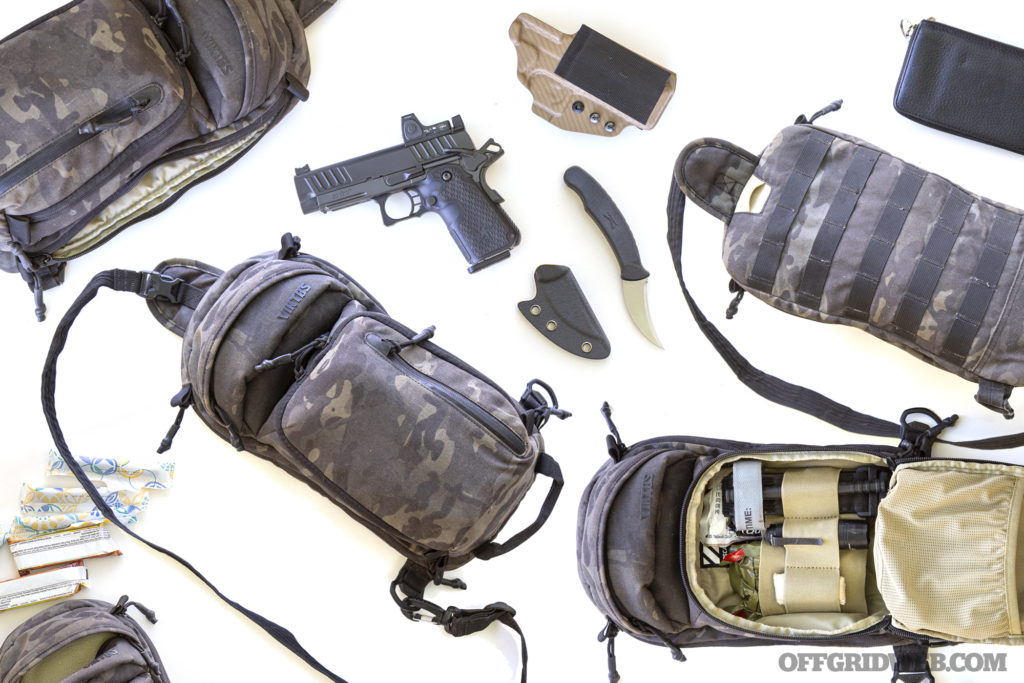
Bag Drop: Viktos Upscale 2 Urban EDC Sling BagThis Viktos Upscale 2 sling bag belongs to one of our female freelance photographers, who wears it instead of carrying a traditional purse.
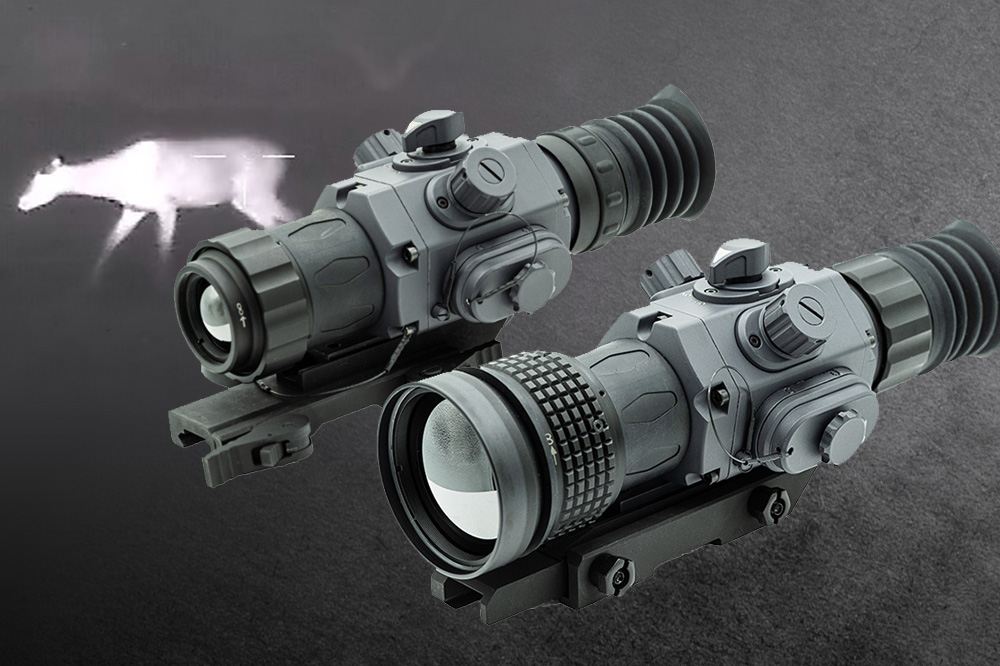
New: Armasight Contractor Thermal OpticsThe Armasight Contractor series includes the Contractor 320 3-12x25mm and 6-24x50mm. Both thermal optics are designed and built in the USA.
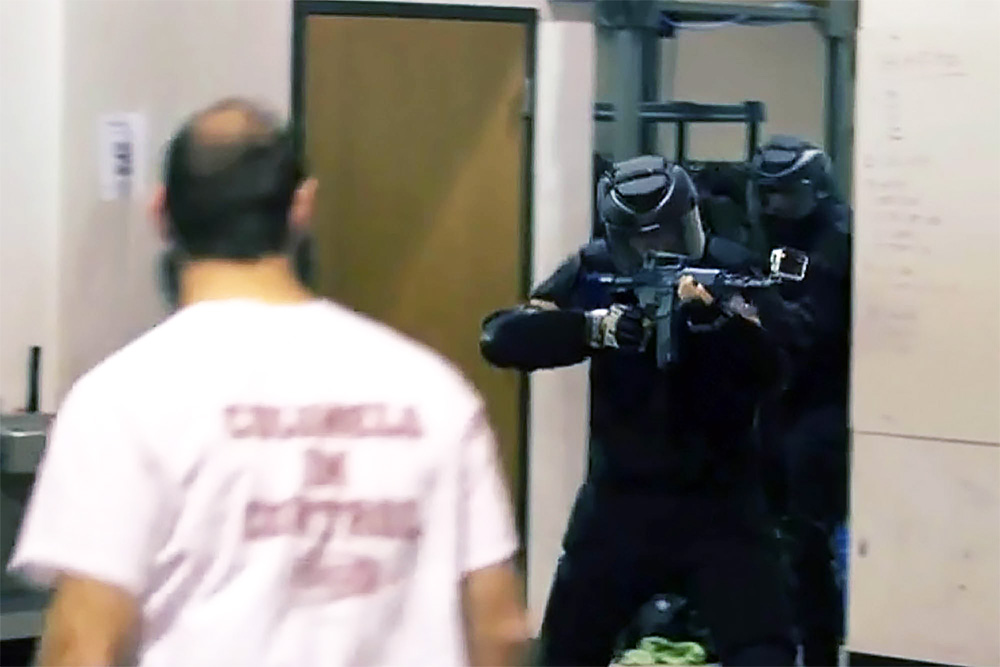
Fools Rush In: Considerations for Engaging an Active ShooterIn this article, we examine how to best survive and solve active shooter scenarios and other complex deadly force encounters.
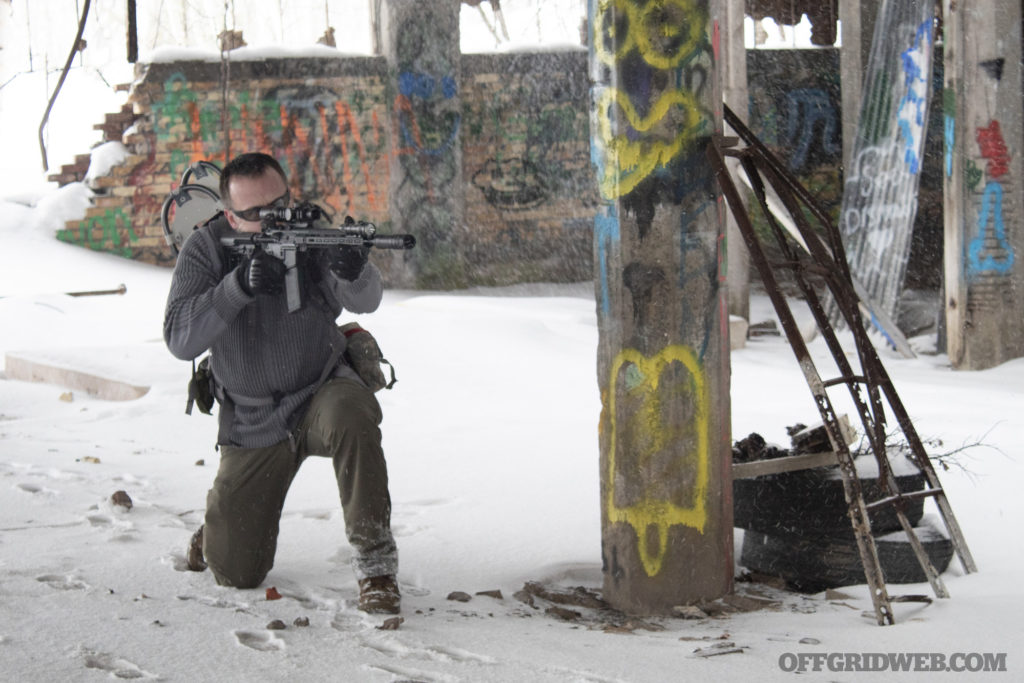
Tailor-Made ARs Part 2: A Veteran's General Purpose AR-15Even though I had assumed I knew enough, almost everything I had understood about a general purpose AR-15 had changed in a handful of years.
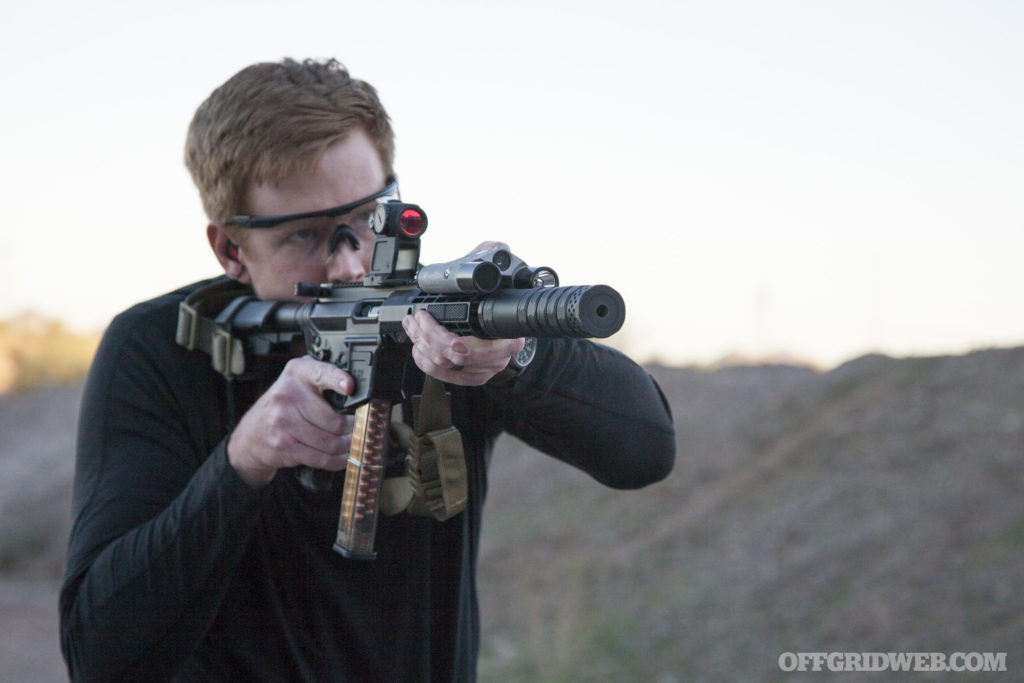
Review: Phantom Hill CTF-1 Infrared Laser and IlluminatorWith a white light, IR laser, and IR illuminator in a single unit, the Phantom Hill CTF-1 is an all-in-one solution for low-light and NV use.
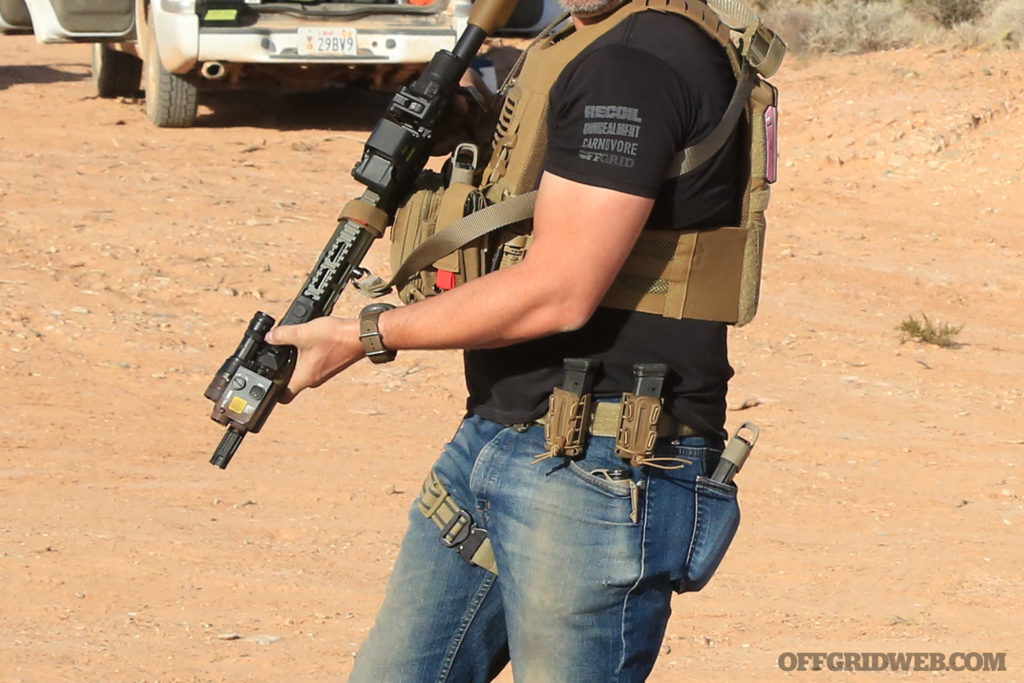
Review: Arbor Arms Raptor Duty BeltThe Arbor Arms Raptor duty belt offers a well-built, low-cost option that can be used in a variety of roles from EDC to combat.
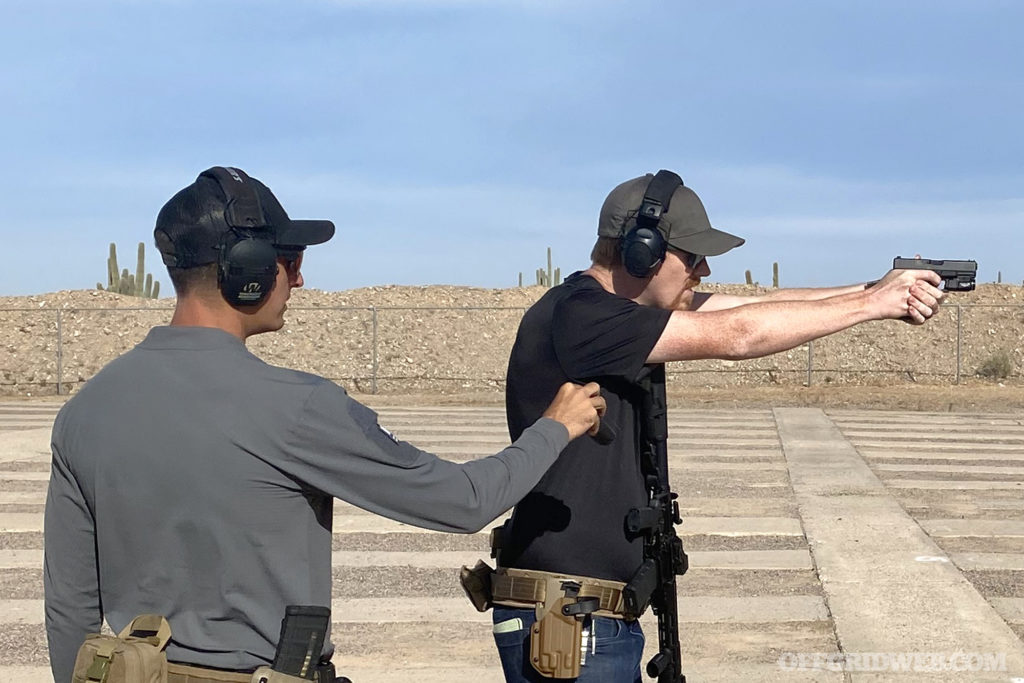
Blue-Green Alliance Pistol & Carbine Class ReviewBack in December 2019, I attended my very first formal pistol shooting course, taught by Blue-Green Alliance founders Gabe and Josh (both active Force Recon Marines). The lessons I learned […]
The post Victor Lopez Interview: Founder of Sierra Element Tactical Training appeared first on RECOIL OFFGRID.
By: Offgrid Staff
Title: Victor Lopez Interview: Founder of Sierra Element Tactical Training
Sourced From: www.offgridweb.com/preparation/victor-lopez-interview-founder-of-sierra-element-tactical-training/
Published Date: Sun, 24 Jul 2022 11:00:13 +0000
------------------------
Did you miss our previous article...
https://bushcrafttips.com/bushcraft-news/so-what-size-should-you-split-firewood
 What is BushcraftSurvival SkillsToolsVideosBushcraft CampsBushcraft KitsBushcraft ProjectsPrivacy PolicyTerms And Conditions
What is BushcraftSurvival SkillsToolsVideosBushcraft CampsBushcraft KitsBushcraft ProjectsPrivacy PolicyTerms And Conditions
